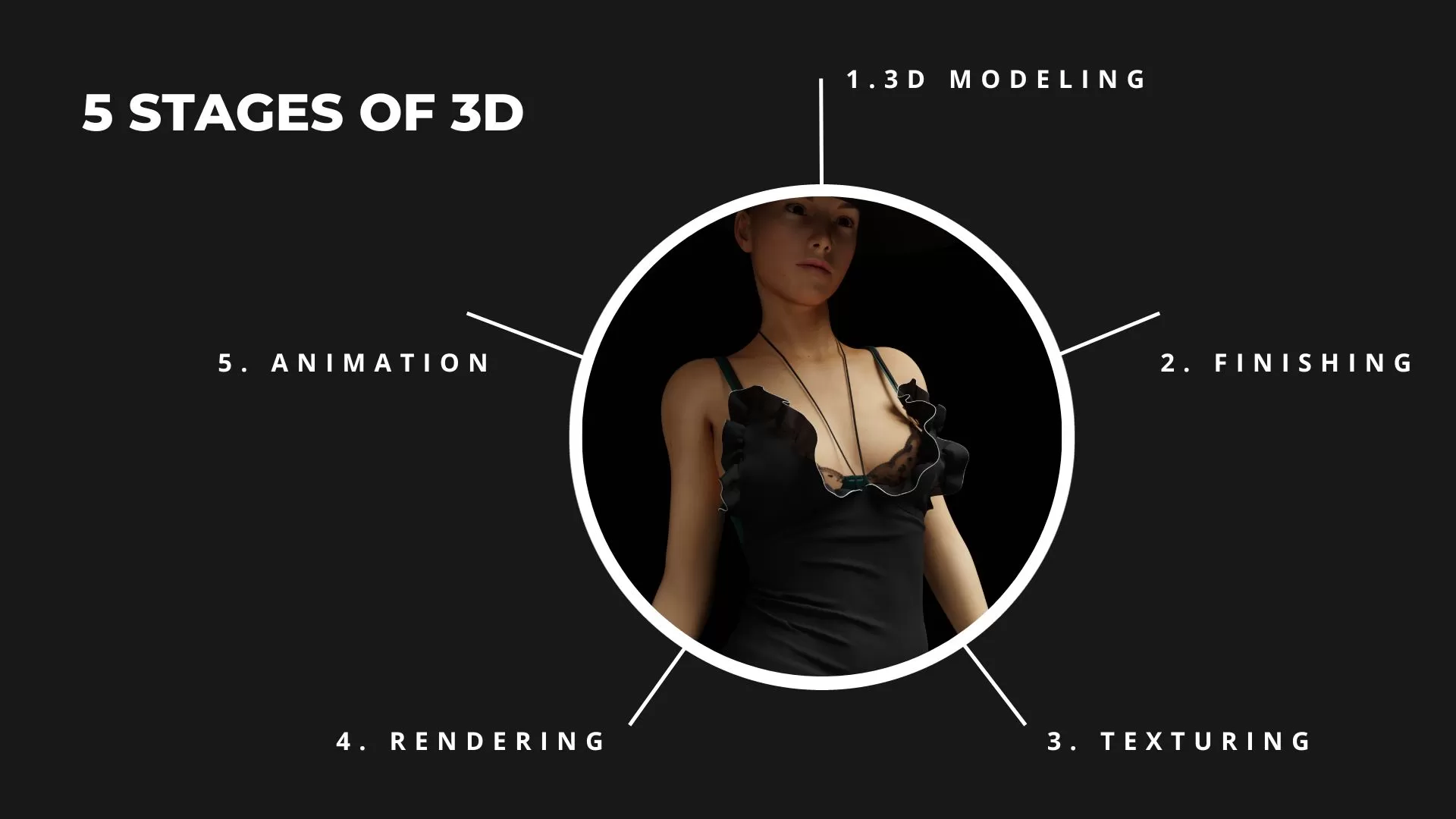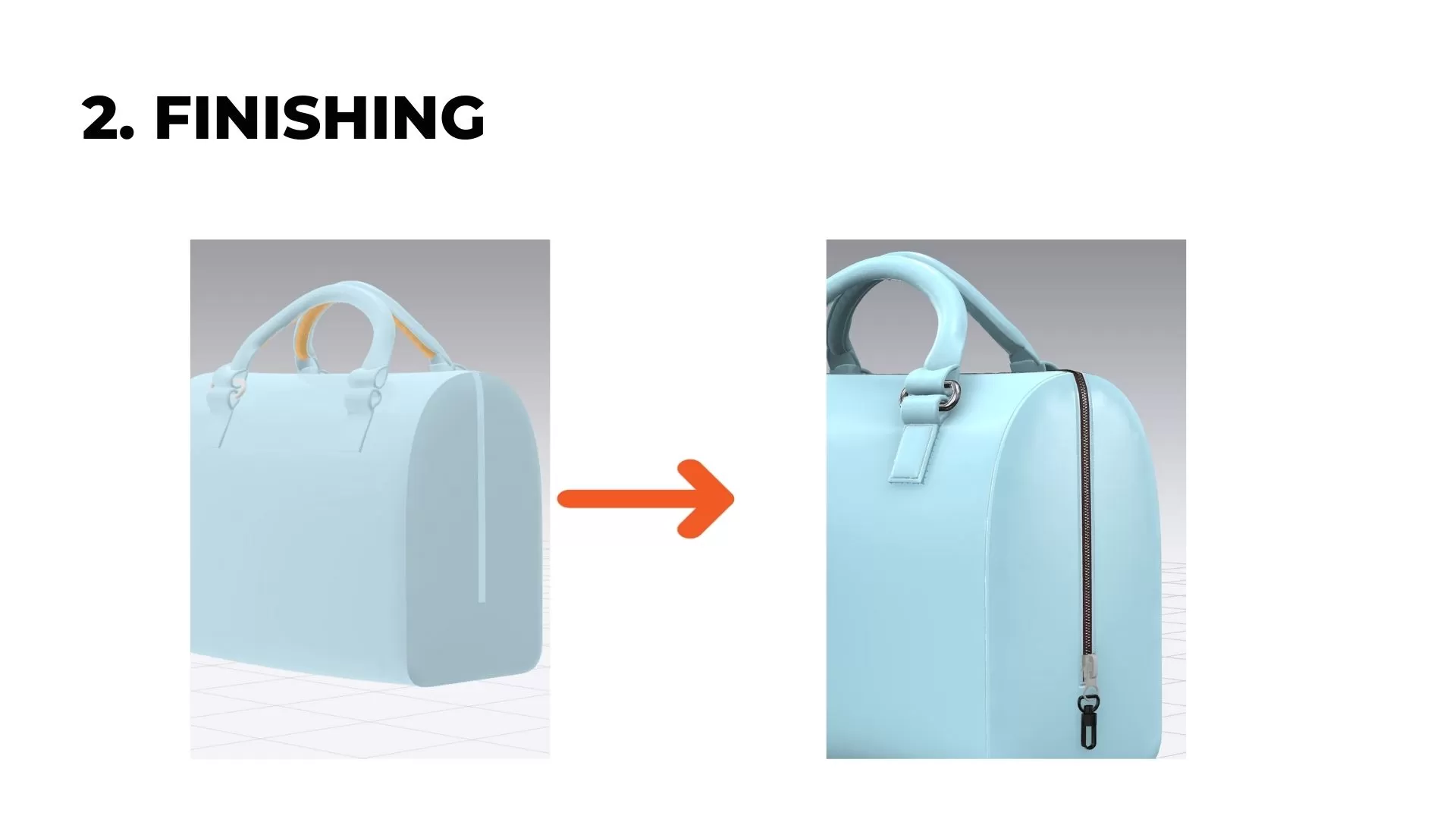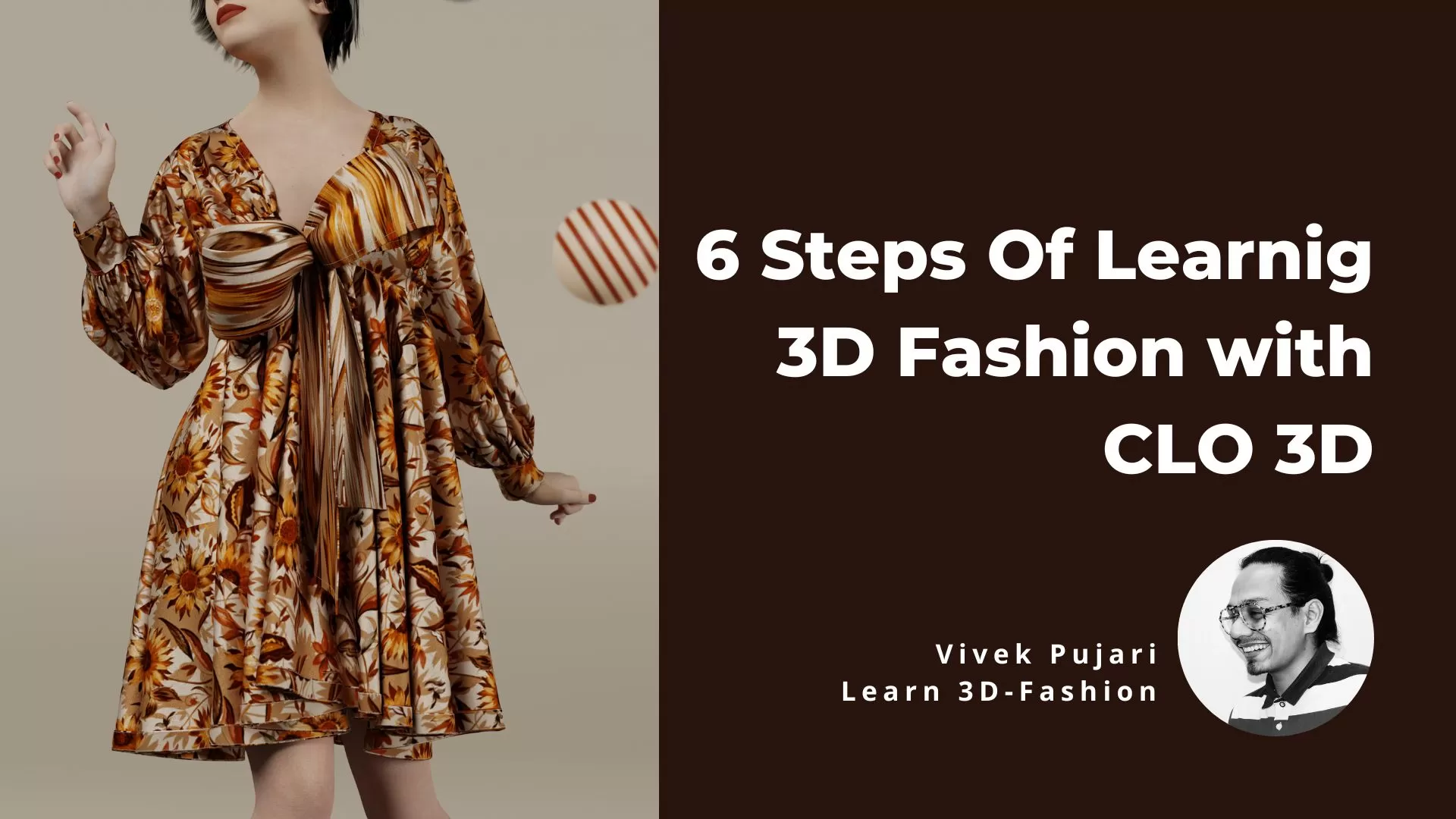The fashion industry is currently undergoing a revolution with the advent of 3D technology, and one key tool for learning about 3D fashion is CLO 3D. In this article, a framework of 6 steps for learning 3D Fashion with CLO 3D will be provided. Let’s now immerse ourselves in the world of 3D fashion with CLO 3D, a groundbreaking tool that is reshaping the fashion industry.
In this blog, you will be guided through 6 steps to learn 3D fashion with CLO 3D, which has been specifically designed for beginners. There are many 3D fashion software, but we will be discussing CLO 3D in depth.
What is CLO 3D?
In the 6 Steps of learning 3D fashion with CLO 3D let’s look into the first stage of understanding CLO 3D. It is a 3D fashion design software that allows designers to create virtual, true-to-life garment visualizations. Before you dive in, it’s important to understand its interface and basic functionalities. Any digital fashion software like CLO 3D has 5 major learning steps:

5 Major Concepts in 3D fashion with CLO 3D
1. Modeling
A simple process of taking a basic shape and converting it into a desired shape. eg. You can take a basic torso and convert it into a dress. This process involved the understanding of pattern making and hence pattern making becomes an essential part of modeling in digital fashion with CLO 3D.
2. Finishing
The finishing process of a 3D-designed garment marks a pivotal stage, where trims, seams, and various intricate details are incorporated, resulting in the comprehensive construction of the garment. This phase is of paramount importance as it is not only where authenticity is imparted to your creation but also where the overall realism of the final appearance is elevated. In this context, two crucial topics are to be considered for the finishing process: Garment seams & Construction, and Trims & Accessories.
3. Texturing
After designing a 3D garment, it becomes essential to grasp the nuances of various fabrics, such as woven and knit, along with their properties like texture, luster, thickness, GSM (grams per square meter), and surface attributes such as prints and embroidery. This understanding is pivotal for effectively conveying the specifics of the garment you’ve created. This procedure of conveying the fabric characteristics in the garment is referred to as the Texturing process.
4. Rendering
Once your garment is prepared, the subsequent step entails the configuration of lighting, camera, environment, and props in order to capture and render images. Within the realm of 3D rendering, this process represents the transformation of a three-dimensional (3D) scene or model into a two-dimensional (2D) image or animation. This intricate simulation is characterized by the replication of the interplay of light with objects in the 3D space, with meticulous consideration given to elements such as illumination, materials, textures, and the selected camera perspective. As a result, lifelike visuals are generated, imbuing your garment and its surroundings with vivid, realistic life.
5. Animation
Ultimately, you can breathe life into your avatar and garment by incorporating animation. This involves a two-fold process: firstly, “rigging” your avatar to enable movement, and secondly, simulating the garment based on the rigging. It’s important to note that animation can be a time-consuming endeavor, and the speed of rendering is influenced by your PC’s graphics card. Nevertheless, it’s an immensely enjoyable process as it brings your garment to life, allowing you to witness it gracefully draping and moving in a virtual real-life setting.

Let’s Now Dive into each of the individual stages of learning digital fashion with CLO 3D in-depth.

What is Modeling in CLO
The second step of 6 Steps of learning 3D fashion with CLO 3D is modeling. It involves the creation of digital representations or simulations of clothing, garments, and accessories within three-dimensional (3D) computer graphics environments. Within this modeling process, our starting point can be a basic shape, such as a torso, which can be transformed into various garments, like a dress. Consequently, an understanding of pattern-making methods and techniques becomes paramount when learning about modeling in 3D fashion with CLO 3D.
What Makes pattern-making so important for Modeling and learning CLO 3D
Pattern-making is pivotal in the context of fashion modeling and learning 3D fashion with CLO 3D for several reasons. Pattern-making serves as the foundation for creating garments. It involves the precise construction of templates (patterns) that dictate how pieces of fabric are cut and sewn together to form a garment. Understanding patterns is essential for designing clothing, and this knowledge is directly applicable when creating digital representations of garments in CLO 3D.
By starting with well-crafted patterns, a seamless transition can be made from the two-dimensional (2D) realm of patterns to three-dimensional (3D) fashion models. This enables the creation of realistic, detailed clothing simulations in CLO 3D.
Furthermore, the importance of pattern-making lies in its ability to facilitate the accurate replication of real-world garments within the digital environment, ensuring a high level of precision and authenticity in the final 3D representations. Ultimately, it is through the mastery of pattern-making techniques that fashion modelers and CLO 3D learners can achieve excellence in their craft.
Some of the key concepts of patternmaking that are required with learning 3D fashion with CLO 3D are:
- Basic Pattern Blocks: These are the foundational patterns used as a starting point for creating various garment designs. Common basic blocks include bodice, skirt, and trouser blocks.
- Dart Manipulation: Darts are folded or tapered fabric tucks that help shape the garment to fit the body. Understanding how to manipulate and reposition darts is crucial for achieving different styles and fits.
- Grading: Grading involves creating patterns in multiple sizes to accommodate a range of body shapes. This process ensures that a design can be produced in various sizes while maintaining its proportions.
- Symmetry: Maintaining symmetry in pattern pieces is crucial for ensuring that the finished garment looks balanced and well-proportioned.
- Other concepts: Understanding different concepts like Dart Manipulation (Tuck-Darts, Pleats, Flares, and Gathers), Style lines, Added Fullness, Yokes, Flanges, Pin Tucks, Pleat Tucks, Contouring, grading, and others.


What is Finishing?
The third step of the 6 Steps of learning 3D fashion with CLO 3D is Finishing. It is the unsung hero of the 3D fashion world. If you’re working in CLO 3D or similar 3D clothing software, nailing the finishing can mean the difference between a flat, lifeless design and a virtual garment that mirrors real-life texture and fit. This vital step brings your 3D clothing designs to life by adding those crucial final touches: trims and seams.
Two most important topics covered under 3D fashion finishing are:
1. Trims
Firstly, let’s talk about trims. Trims are essential in 3D fashion because they add both aesthetic appeal and functional value to your 3D clothing. These elements include everything from zippers and buttons to patches and lace. In CLO 3D, you have the liberty to choose from a wide variety of pre-designed trims or even create your own.
How to Effectively Utilize Trims:
- Consider Functionality: Make sure the trims serve a purpose, whether it’s a zipper that actually opens or a decorative brooch.
- Play with Aesthetics: Choose trims that complement the overall design. In CLO 3D, you can easily experiment with different styles and colors.
- Attention to Scale: It’s vital to ensure the trimmings are proportional to your 3D clothing item. Too big or too small, and it could throw off the entire look.
- Quality over Quantity: Adding too many trims can make your design look cluttered. Focus on select elements that truly elevate your design.
2. The Significance of Seams
Next up are seams, the building blocks of any clothing item, 3D or otherwise. In 3D fashion, seams are more than just joining two fabric pieces together; they define the shape, structure, and even the flow of the garment.
Mastering the Art of Seams in 3D Fashion:
- Seam Type Matters: Different types of seams serve different functions. In CLO 3D, you can choose from a range of seam types to fit the specific needs of your design.
- Focus on Realism: Seams should emulate real-world sewing techniques. Make sure your seams in the 3D environment are as realistic as possible to give your clothing a natural look.
- Seam Placement: Strategic seam placement can influence the garment’s fit and drape. Take your time to adjust and preview different seam placements in CLO 3D.
- Testing and Adjusting: The beauty of 3D fashion is the ability to immediately see how changes affect your design. Tweak and fine-tune your seams until you achieve the desired outcome.
Check Our video to understand better


What is Texturing
Texturing is the fourth step of the 6 Steps of learning 3D fashion with CLO 3D. It is the heartbeat of 3D fashion, weaving life into your digital designs. In the realm of 3D clothing, especially when working with sophisticated software like CLO 3D, texturing is your secret weapon for adding fabrics, prints, and intricate details that catapult your creations from flat to fabulous.
Texturing is not just about aesthetics; it’s about capturing the essence of materials and how they interact with light, movement, and environment. To master this complex feature, you also need a thorough understanding of fabric properties, including different weaves, printing types, and dyeing methods.

Rendering, the fifth step of the 6 Steps of learning 3D fashion with CLO 3D. It is the storytelling part of 3D fashion, transforming your meticulously crafted designs into vivid, photo-realistic images. As you navigate the complex yet exciting world of CLO 3D, understanding rendering becomes paramount. It’s not merely about creating a snapshot; it’s about telling a story. This compelling process allows you to encapsulate the essence, mood, and vision of your 3D clothing, making it an indispensable tool for 3D fashion storytelling.
The last step of the 6 Steps of learning 3D fashion with CLO 3D is animation. While designing your 3D clothing is one aspect, bringing it to life through animation is another beast entirely. Animation in digital fashion serves as a dynamic canvas, where you can visualize how your designs interact with movement, space, and even storytelling elements like avatars and props.
Embarking on a journey to master 3D fashion with CLO 3D is akin to stepping into a dynamic world filled with unlimited creative possibilities. As we’ve explored, there are six essential steps that serve as the cornerstone of this journey. Starting from grasping the fundamentals of 3D fashion, you’ll move on to delve into the intricacies of modeling, finishing, and texturing to bring your designs to life. But it doesn’t stop there; understanding the nuances of rendering and animation ensures that your 3D clothing is not only visually stunning and technically correct but also tells a compelling story.
